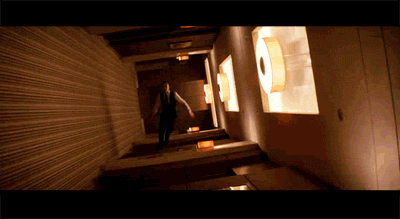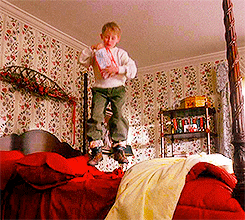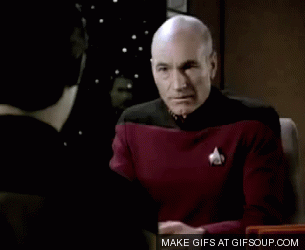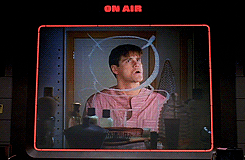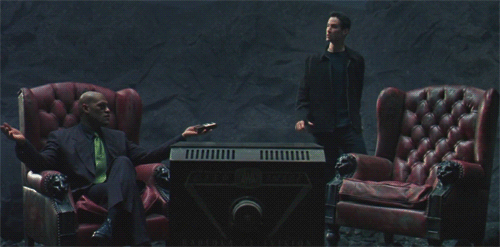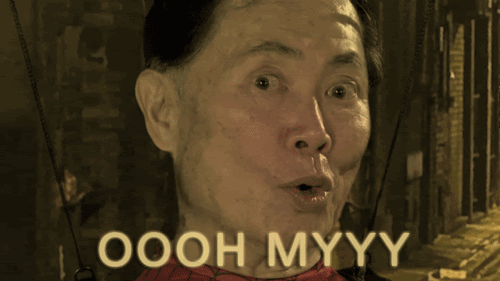Ok, it’s not really a debate. It’s just my opinion. But, for your entertainment, I shall now determine who will win the World Cup of 2014 based on team kits.
![]()
Only the most advanced science will determine these results!
So, to look at how the whole thing will go down, here is a handy graphic bracket showing how groups play each other once the Group Stage concludes.
![]()
Click to make big.
Group A: Brazil, Croatia, Mexico, Cameroon
![]()
Brazil= Home Classic Yellow is classic and looks solid. Away Blue looks nice, and should show up well both close up and further away on the TV.
![]()
Croatia= Ignoring the creepy twin effect, Home White Check is legit, and a well-played edition of Croatia’s classic checked kits. I also enjoy Croatia’s away blues with Red/White check side effects. Well done overall.
![]()
Mexico Home: I actually don’t like this. It’s just a big meh to me. Like, I can see where they were trying to go with it, but it just seems like a half effort (let’s throw some thin dark stripes on it Yahoo!)
![]()
Mexico Away: I can easily say I heartily dislike this kit. The color is just all wrong (if you are going to go highlighter, go full highlighter), and the design, AGAIN, is just lazy.
![]()
Cameroon Home: I like it. Puma does a good job with balance, the design looks great up close and far away, and it’s the same design as the Away, which I appreciate.
![]()
Cameroon Away: Again, a balanced kit from Puma. Keeps the spirit of Cameroon’s colors, and is the same kit design as the Home but has a different spirit because the drawings on the away are much more subtle.
Teams Advancing: 1. Croatia 2. Cameroon (which just BARELY beats out Brazil)
Group B: Spain, Netherlands, Chile, Australia
![]()
Spain Home: This is how you stripe a shirt. Plus, Spain gets all the gold since they won in 2010.
![]()
Spain Away: It’s like Adidas was like “NEONNNNN,” but then didn’t know where to go from there. Dang.
![]()
Netherlands Home: Because Lions. Orange, yeah yeah. Super simple, whuuuut? Not your typical Netherlands kit. It works though for some reason.
![]()
Netherlands Away: Minimalist and simple, and yet complex. Yaaaaaaasssssssss.
![]()
Chile Home: Simple. Too simple though? Like the collar, but that crest should not be an iron-on.
![]()
Chile Away: Meh. Too simple. And the tummy design shows up more on the white… which begs me to ask the question… why?
![]()
Australia Home: Classic yellow and green. That collar looks super awkward and uncomfortable though.
![]()
Australia Away: Again, another classic navy for the Aussies. The same collar design which I appreciate, but its such an awkward collar.
Teams Advancing: 1. Netherlands 2. Spain
Group C: Colombia, Greece, Ivory Coast, Japan
![]()
Colombia Away: I actually like this. A little close up detail on the chest, mesh highlights to break up the fabric monotony.
![]()
Colombia Home: This yellow isn’t terrible, and the design with it is simple but catches the eyes in all the right ways in my view.
![]()
Greece Home (white) and Away (blue): Meh. Classic. Simple. Simple. Collar. Simple. Simple. Meh.
![]()
Ivory Coast Home: Not bad. Classic Ivory Coast orange. Like the shoulder details, love their stylized crest.
![]()
Ivory Coast Away: Basically the same. Green.
![]()
Japan Home: Classic Samurai Blue. Love the stylized rising sun textures coming from the crest.
![]()
Japan Away: Continuing their trend of a highlighter kit, its the same on the front. I want to highlight a brilliant design on the back of both kits, the classic brushstroke element on the shoulders. That’s care and storytelling in design.
Teams Advancing: 1. Japan 2. Colombia
Group D: Uruguay, Costa Rica, England, Italy
![]()
Uruguay Home: Classic sky blue. Love the sun stylized fabric backdrop for the national crest. Just enough good color (sky blue, gold) to make the simplicity seem complex.
![]()
Uruguay Away: Thank goodness there is something on the sleeves to break up the monotony. This is too simple.
![]()
Costa Rica Away (white) and Home (Red): Same design on these. The design on the chest somehow mirrors Costa Rica’s crest of circles that I enjoy. Classic coloration for the Ticos.
![]()
England Home: So white. Very white. Much white. Wow.
![]()
England Away: A stylized red kit, with a homage to the English flag with a subtle St. George’s Cross design.
![]()
Italy Home (blue) and Away (white): Not bad. Like the Italian colors on the sleeves of the home and the button collar. Love the red and green Italian side piping on the aways. A nice update on their classics.
Teams Advancing: 1. Italy 2. Uruguay (they are being taken through solely on their home kit)
Group E: Switzerland, Ecuador, France, Honduras
![]()
Switzerland Home (red) and Away (white): Same template as Italy just minus the collars, and on the home a large Swiss cross watermark, and on the away a design of smaller Swiss crosses. They’re ok.
![]()
Ecuador Home (yellow) and Away (blue): Same template for both, which I appreciate. Each with stylized design over the whole kit and surrounding the crest. Not too shabby.
![]()
France Home: Nice and simple with a large collar. The denim look is a nod to Nimes, the birthplace of denim design.
![]()
France Away: Grey thin hoops and a hipster collar. These are a-ok.
![]()
Honduras Home (white) and Away (blue): THE BIGGEST H IN THE WORLD! And that’s all I can say.
Teams Advancing: 1. France 2. Ecuador
Group F: Argentina, Bosnia and Herzegovina, Iran, Nigeria
![]()
Argentina Home: Adidas does a great job on the classic sky blue/white stripes of these kits, with a unique fade design with additional diagonal stripes. Catches the eye.
![]()
Argentina Away: The play of horizontal and diagonal stripes here makes for a splendid away kit.
![]()
B and H Home: A classy blue home for Bosnia and Herzegovina, with the classic three Adidas shoulder stripe that actually works.
![]()
B and H Away: A simple white. Some basic blue templates. Not great. Not bad.
![]()
Iran Home (white) and Away (red): They both have the cheetah design, which is a huge cheetah. The red away has a nice extra green design on the chest.
![]()
Nigeria Home: Thank goodness it is not just a block of green. Some simple lines and color variations make this worth while.
![]()
Nigeria Away: I can’t decide whether I like the brighter green on this, or if I wish they had gone with a darker green.
Teams Advancing: 1. Argentina 2. Iran (yes, the Cheetah won me over)
Group G: Germany, Portugal, Ghana, United States
![]()
Germany Home: Everything yes about that chest chevron. Color, design, balance. Yes.
![]()
Germany Away: Lol whut. Large hoops to echo previous green versions.
![]()
Portugal Home: Classic crimson-ish for Portugal here with not too shabby of a stripe design although it does not translate well to the sleeves.
![]()
Portugal Away: Ok.
![]()
Ghana Home: That collar is giving me a lot. And… I kinda like it.
![]()
Ghana Away: Puma is getting repetitive with these main template block designs doubling as horizontal stripes. But this works out well for Ghana.
![]()
USA Home: Yeahhhhh, not bad. Collars, though? *shrug*
![]()
USA Away: These have… *cringe*… grown on me. I don’t mind them. They are not bad. *breathes heavily* That was hard to say.
Teams Advancing: 1. Germany 2. USA (beats Ghana by just a teensy weensy bit)
Group H: Belgium, Algeria, Russia, South Korea
![]()
Belgium Home (red) and Away (black): I like the design of the Home and 3rd, with the crown overlay and cut-off stripe with the crest. However, can I just say the Away is completely screwed by the selfishness of the kit maker’s logo breaking the sash!?
![]()
Algeria Home: Mehhhhhhhh.
![]()
Algeria Away: Super Mehhhhhhhhh.
![]()
Russia Home: A nice dark red for Russia. The watermark is the Kosmonauts Museum, and on the back neckline is written “Let’s Go” which were Yuri Gagarin’s words during launch.
![]()
Russia Away: Continuing the space theme, the blue curve design is the view of Earth from space. This kit is very purty.
![]()
South Korea Home: Classic red. Very simple, too simple.
![]()
Korea Away: Nice stylization with the red and blue neckline and sleeves. But does not save Korea’s overall design.
Teams Advancing: 1. Russia 2. Belgium
So, let’s recap and look at what we’ve got going on in the Round of 16:
Round of 16
Croatia v. Spain
Japan v. Uruguay
Netherlands v. Cameroon
Italy v. Colombia
France v. Iran
Germany v. Belgium
Argentina v. Ecuador
Russia v. USA
Advancing to the QuarterFinals are:
Croatia, whose kits are just better on average than Spain.
Japan, which easily beats out the simplicity of Uruguay.
Netherlands, who blows Cameroon out of the water with immense design.
Colombia, the shocker of the Round of 16.
France, classic beats cheetah.
Germany, beating out Belgium who is undone by a selfish kit-maker and a third that is the same as their home, when thirds HAVE to be different and completely unique.
Argentina, the multi-stripe action they have going on is magical to me.
Russia, with their space designs are not garish but just right when it comes to designing for an international stage.
So, let’s get to the QuarterFinals.
Match ups are:
Croatia v. Japan
Netherlands v. Colombia
France v. Germany
Argentina v. Russia
And my winners for this round are:
Japan, whose mix of classic and bold, traditional and modern, just makes me smile.
Netherlands, who end the dream run of Colombia.
France, in a very tough decision, that saw Germany’s red black hoop aways sink their progress.
Argentina, in the battle of classic but modern design v. Russia’s idealized and very pretty designs. Argentina’s design and how their striping interplays on their kit wins out.
So, our SemiFinals looks like this:
Japan v. France
Netherlands v. Argentina
Moving into the Final Match in Rio de Janeiro on July 13th is:
Japan, whose bold design outdoes France’s classical looks at the final hour.
Netherlands, in the toughest decision I’ve made today, but overall, their classic orange is well done, and their away fascinates me. Argentina just barely falls short, just barely. This was easily the tightest matchup of of the entire World Cup of Kit Design so far.
So, our Finals pit
Japan v. Netherlands
This is a tough decision, but looking at these two teams up against each other, in the end, I have to go with…
Netherlands
In the home kits, which both have classic colorations (Orange for the Netherlands, Blue for Japan), Netherlands’ classic wins out in my opinion there.
In the away kits, which are both unique, more modern designs (the geometric blue shadings for Netherlands, highlighter yellow for Japan), I again feel that Netherlands comes out on top there, with something a bit more unique, pleasing to the eye both close and from far range, that just beats out the Japanese highlighter away that have been a hallmark the past few years.
So, congratulations Netherlands! Even if you don’t win this year, you won my fashion bracket!
![]()
Final Fashion Bracketology
http://www.footyheadlines.com/2013/12/2014-world-cup-kits.html
![]()
![]()
![]()

























